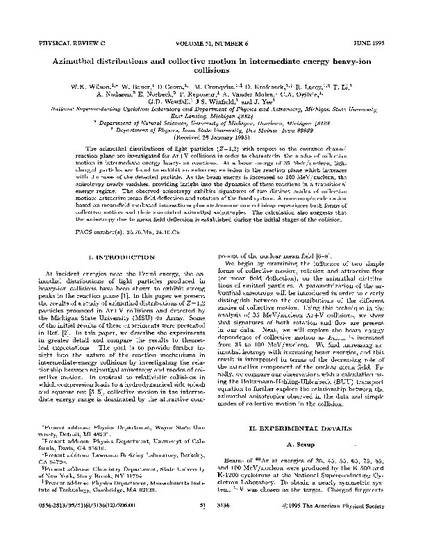
Article
Azimuthal distributions and collective motion in intermediate energy heavy-ion collisions
Physical Review C
(1995)
Abstract
The azimuthal distributions of light particles (Z=1,2) with respect to the entrance channel reaction plane are investigated for Ar+V collisions in order to characterize the modes of collective motion in intermediate energy heavy-ion reactions. At a beam energy of 35 MeV/nucleon, light charged particles are found to exhibit an enhanced emission in the reaction plane which increases with the mass of the detected particle. As the beam energy is increased to 100 MeV/nucleon, the anisotropy nearly vanishes, providing insight into the dynamics of these reactions in a transitional energy regime. The observed anisotropy exhibits signatures of two distinct modes of collective motion: attractive mean-field deflection and rotation of the fused system. A microscopic calculation based on mean-field mediated interactions plus nucleon-nucleon collisions reproduces both forms of collective motion and their associated azimuthal anisotropies. The calculation also suggests that the anisotropy due to mean-field deflection is established during the initial stages of the collision.
Publication Date
June, 1995
DOI
10.1103/PhysRevC.51.3136
Publisher Statement
Copyright 1995 American Institute of Physics
Citation Information
W. K. Wilson, Craig Ogilvie and et al.. "Azimuthal distributions and collective motion in intermediate energy heavy-ion collisions" Physical Review C Vol. 51 Iss. 6 (1995) p. 3136 - 3147 Available at: http://works.bepress.com/craig-ogilvie/253/
